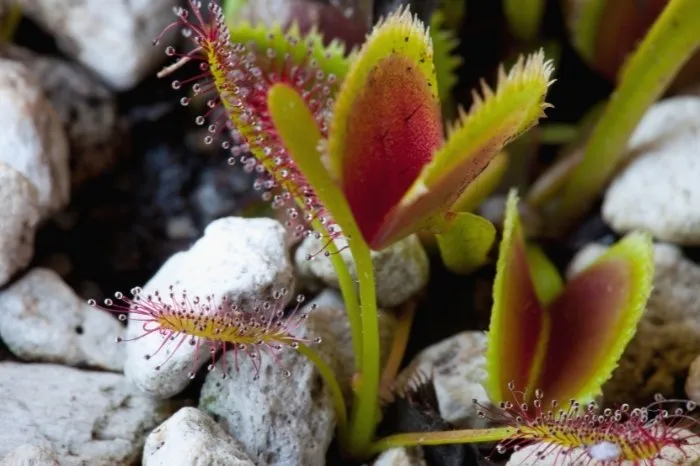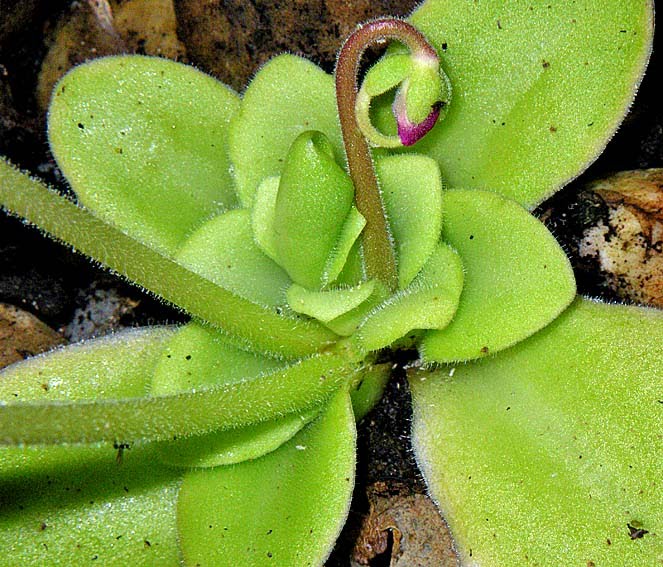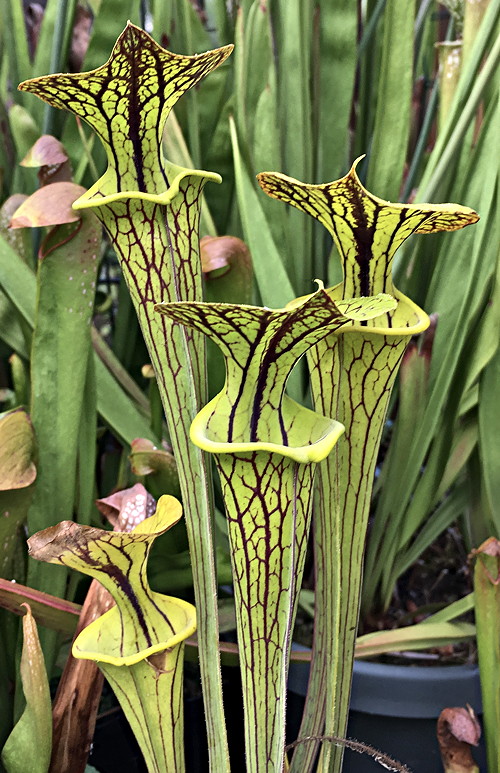Best carnivorous plant for fruit flies – Efficacy and Complements
It is very annoying to have pests in the house, and a solution is not always obvious. Venus flytraps can be used to reduce the bug population when fruit flies become a problem. In this article, I’ll discuss the various carnivorous plants I own and how effective they are at warding off fruit flies.
Fruit flies are eaten by venus fly trap, but they are not a reliable pest control for this species of fly. Most mature Venus flytraps are too large to catching fruit flies successfully. A more effective way to manage fruit flies, gnats, and other small insects is to grow other carnivorous plants.
Let’s now examine the best ways to eliminate a bug infestation at home.
Using a Venus fly trap to control pests
Venus flytraps consume a variety of insects. In addition to eating flies, they also consume ants, gnats, worms, and spiders.
Due to their size and the small number of leaves, venus flytraps are ineffective at catching bugs, especially fruit flies. Other carnivorous plants, like butterworts, pitcher plants, and sundews, are more successful at warding off pests.
Main Obstacles
- Small insects can escape from the Venus flytrap leaf traps, including ants, fruit flies, and gnats.
- Since each Venus flytrap can only produce up to 10 traps at a time, it can only hold a very small number of insects at once.
- Venus flytraps’ digestive processes can last for a week or more. After catching an insect, traps remain closed and inactive for several days.
- Venus flytraps need a period of dormancy. They enter a dormant state and lose the majority of their leaves during the winter. They are not active predators while in dormancy.
Venus flytraps can still be used to reduce the number of bugs in your home, but you must keep in mind that they can only eat a small number of insects each month. Venus flytraps are a plant I grow because I adore them, and their predatory nature is a bonus.
The Best Carnivorous Plants to Control Fruit Flies
Pests can be effectively managed by these four kinds of best carnivorous plants:
Also read our guide 7 Easy Carnivorous Plants – Best Review
Let’s investigate each of the choices now:
Butterworts from Mexico
A particular carnivorous plant species that easily attracts insects thanks to the sticky material in their leaves.
The adhesive leaves that these carnivorous plants produce are distinctive for having a shiny glare. The leaves draw insects, and as soon as they touch the plant, they become stuck.
They are frequently found in mountainous, humid areas like Central and South America and Mexico.
Butterworts are excellent at catching flying insects, particularly small ones like fruit flies.
Pros:
Butterworts are cultivable indoors.
They can be grown either indoors or outdoors, depending on the climate, and dormancy is not temperature-dependent.
They have enormous insect-catching capacity.
Cons:
Butterworts are harder to find plants. However, some online nurseries do sell them.
Sundews
Tentacles in the leaves of Sundews and Drosera (sundew plant) secrete adhesive substances to capture prey.
There are numerous varieties of sundews. Before buying, I suggest doing some research on the particular variety. While some sundews require to be grown indoors, others need direct sun light. Additionally, the temperature and dormancy requirements vary depending on the type of sundew (not all Sundews need dormancy).
A few sundews, such as the Cape Sundew or Drosera Natalesis, require very little maintenance. Online retailers offer Cape Sundews for a reasonable price.
Pros:
- When compared to best carnivorous plants, sundews are simple to grow.
- Sundews of various varieties can be grown indoors.
- Some Drosera species do not require dormancy.
- Each leaf of a typical adult Drosera plant can hold several insects.
CONS:
- Insects are essential to their health. They suffer if they do not consume enough bugs.
- They may be small in size, which reduces their ability to catch insects, depending on the variety.
Small insects like gnats, fruit flies, and mosquitoes can be effectively controlled indoors and outdoors by sundews and Mexican Butterworts. While some species are more successful than others at trapping insects, most adults can catch several insects in each of their sticky leaves.
Nepenthes Pitcher Plant
Nepenthes have pitcher-shaped structures that are used to catch insects at the end of their leaves.
The sweet nectar on the edge of Nepenthes’ pitchers attracts insects. Insects visit the pitchers to drink the nectar, but if they venture too far, they may slide inside the pitcher’s digestive enzymes and become trapped inside.
Since most insects end up drowning in the digestive juices once they enter the pitcher, it is difficult for them to escape.
Nepenthes can catch several insects at once. A single pitcher plants can hold dozens of insects, depending on the size of the plant.
Pitcher plants have a large capacity to catch insects.
Pitcher plants can eat a variety of sizes and types of insects because of their size.
Cons:
Pitcher plants may stop producing pitchers and lose their ability to trap insects in less-than-ideal circumstances.
Sarracenia
Sarracenia plants have tall pitcher-shaped leaves that serve as insect traps.
The sweet nectar is used to entice insects, and digestive juices found inside the leaves are used to consume prey.
Outside, sarracenia can serve as a pest deterrent. Growing Sarracenia plants indoors is difficult because they need a lot of sun light.
Since Sarracenia won’t survive for very long in the absence of adequate lighting, I wouldn’t advise using them to control indoor pests.
Large adult Sarracenia pitchers can accommodate numerous insects.
The Cobra lily plants favor cool to warm daytime temperatures and cold or cool evening temperatures. They are also called lobster pot plants (Darlingtonia californica).
Pros:
- Sarracenia can catch a lot of insects at once.
- Sarracenias are not restricted to consuming a particular size or type of insect due to the size of their pitchers.
Cons:
- Sarracenia cannot be used to combat indoor pests because they are very difficult to grow indoors.
Outside, plants like Nepenthes and Sarracenia are effective at reducing insect populations. These plants possess large insect-holding pitchers. For noticeable results, best carnivorous plants should be used in conjunction with other pest control strategies.
Carnivorous Plant Care
Being the owner of a carnivorous plant is fun and interesting. For inexperienced growers, keeping them alive and healthy can be difficult.
To survive, carnivorous plants need special maintenance considerations. The following is a rundown of the key elements of cultivating carnivorous plants:
Watering
Very little mineral water is necessary for carnivorous plants. Carnivorous plants shouldn’t be watered with most tap water or bottled water. Such water can eventually kill the plant by causing mineral burns.
Only use reverse osmosis water, distilled water, or rainwater to water carnivorous plants.
Every variety of carnivorous plant requires different amounts of watering. But the majority of them will need watering frequently.
To keep the soil moist, venus flytraps are frequently kept in a tray that is submerged in water. Sundews have higher water requirements and are frequently grown in standing water.
Soil
The minerals, additives, and fertilizers found in the majority of soil blends are intolerable to carnivorous plants. Never use MiracleGro, cactus soil, succulent soil, or any other type of common potting soil.
Only pot carnivorous plants in soil are made specifically for them. Carnivorous plant soil can be made by purchasing the components, combining them, or ordering them online.
A slightly different blend might be advantageous for various species of carnivorous plants.
However, peat moss, long fiber sphagnum moss, perlite, or sand are present in the majority of carnivorous plant blends.
In this guide, “Soil Guide,” you can learn more about soil and where to buy it.
Lighting
The right lighting is essential for carnivorous plants. The vast majority thrives in bright, sunny environments. Some plants thrive indoors with grow lights, while others thrive outside with sunlight.
Dormancy
Some carnivorous plants need a period of dormancy. Similar to hibernation is dormancy. As it loses the majority of its leaves, the plant “rests” for a few months. They emerge from dormancy stronger than ever.
Do your research on your plant’s need for dormancy. The process of dormancy is crucial to the growth of the plant. The plant may suffer if dormancy is skipped or improper care is given during this time.
Feeding
Outdoor carnivorous plants naturally catch insects. To supplement their diet, indoor plants need to be fed at least once per month.
Even though they are not dependent on eating insects to survive, carnivorous plants gain a lot from the extra nutrients.
Pest Control Solutions to Eliminate Fruit Flies
Use fruit flies traps
This solution doesn’t involve any chemicals. The traps are simple to set up and reliable.
The procedure is easy. Wait for the fruit flies and gnats to enter the plastic trap after placing bait inside. They can’t leave once they’ve entered.
In the grocery store, I have seen disposable options, but I personally like the reusable variety. You can start controlling your fruit fly infestation by purchasing a set of reusable fruit fly traps online.
Use a Fruit fly spray eliminator
Numerous companies sell sprays that kill bugs across the board, some of which are targeted specifically at fruit flies and gnats. Use one of this grocery store or hardware store solutions.
Sanitize the area
This advice will assist you not only in getting rid of fruit flies but also in avoiding further infestations.
Where fruit flies congregate, make sure to wipe counters and other surfaces. To stop attracting bugs, get rid of any organic residue.
Use a food net to isolate insects from your meal
To keep the food that attracts fruit flies away from the infestation, use a mesh-style food net. Also, be sure to throw away any fruit or other food that may be rotting or on the verge of spoiling to prevent luring more insects.
Store all or at least most food in the fridge
Not all food requires refrigeration. However, if you have a bug problem, you might want to think about keeping food items in the refrigerator and out of sight.
FAQ
Fruit flies—can a Venus fly trap get rid of them?
Despite being a well-known carnivorous, Venus Flytrap is not as effective at controlling fruit flies as some other carnivorous plants are.
Gnats will carnivorous plants consume?
Yes.
Pinguicula, Drosera, and Drosophyllum are a few carnivorous plants that can catch and eat gnats.
Gnats will Venus flytraps eat?
A Venus flytrap will occasionally eat gnats. You’re out of luck if you want to get rid of gnats with this plant.
Are fruit flies eaten by sundew plants?
Fruit flies die from sundews. The best way to get rid of a fruit fly infestation is to purchase some sundews.





